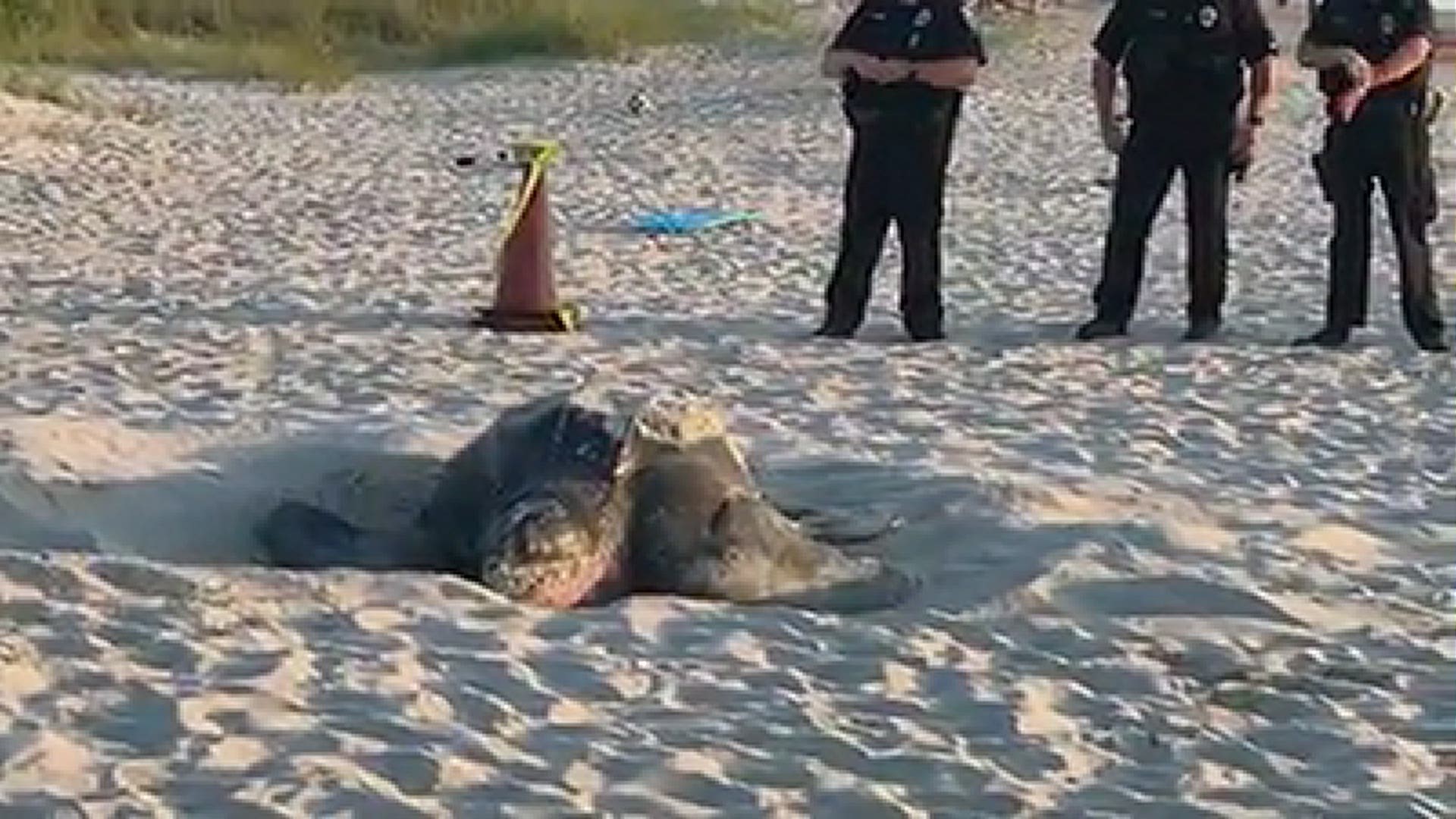ST. PETERSBURG, Fla. — It's that time of year when thousands of sea turtles, sea birds and waterbirds nest along the Florida coast.
As these animals arrive, the Florida Fish and Wildlife Conservation Commission (FWC) wants to remind beachgoers to be mindful in protecting these nesting animals and share the beach.
"Because our state’s shorelines are critical for sea turtle and waterbird nesting, beachgoers can make a big difference in helping them," the FWC said in a newsletter.
Sea turtles typically return to nest along Florida's southeast Atlantic coast from Brevard County south to Broward County in March, wildlife officials say. Gulf Coast or north Florida beaches will see nesting sea turtles in April or May. Around the same time, shorebird species will nest directly on beaches across the state where their eggs and chicks appear camouflaged in the sand.
Distance
Some important things people at the beach can do, according to biologists, is give them space, minimize disturbances and keep beaches clean and dark.
Sea turtles are adorable, but the FWC says to keep your distance. Getting too close, about 50 feet or less, to nesting sea turtles can cause them to leave the beach before they complete nesting.
Also remember that it is illegal to harm or disturb nesting sea turtles and their nests, eggs and hatchlings.
The same goes for nesting birds on the beach. As a general rule, you should stay about 300 feet away from nesting birds. Getting too close to shorebirds, seabirds and wading birds risks scaring them away from their breeding site, leaving behind vulnerable eggs and chicks "exposed to the elements and predators."
An egg left out in the sun without a parent to protect it can increase egg temperatures to lethal levels after just a few minutes.
"Shorebirds and seabirds nest in shallow scrapes in the sand and their eggs and chicks are well-camouflaged, making them vulnerable to being stepped on unless people look out for them and avoid walking through flocks of birds," FWC says.
RELATED: 'Stow it, don't throw it': Marine life experts urge for careful disposal of used fishing line, gear
Trash
Trash can also make it harder on sea turtles and nesting birds. Food scraps attract predators like raccoons and crows and litter can entangle sea turtles, birds and other wildlife. FWC says beachgoers can help by doing the following:
- Properly disposing of all trash
- Filling in human-made holes in the sand
- Removing boats, beach toys and furniture from the beach before sunset
Fishing lines also pose a threat to sea turtles, waterbirds and other wildlife, so it's important to dispose of them properly. Click here to find monofilament recycling stations.
Lights out
If you're a nighttime beachgoer, during nesting season it's important to keep it dim.
"Any lighting can misdirect and disturb nesting sea turtles and their hatchlings, leading them away from the ocean and toward potential danger, so beachgoers should avoid using flashlights or cellphones on the beach at night," according to the FWC.
Those who live near the beach or are visiting can also do their part by turning out lights or closing curtains after dark to ensure nesting turtles and their hatchlings are not disturbed.
How you can help
If you are looking for ways to help sea turtles, you can always reach out to the FWC Wildlife Alert Hotline at 888-404-3922. There, you can report a sick, injured or entangled sea turtle.
There are also ways to participate in shorebird and seabird conservation efforts in Florida. Click here to learn more.

